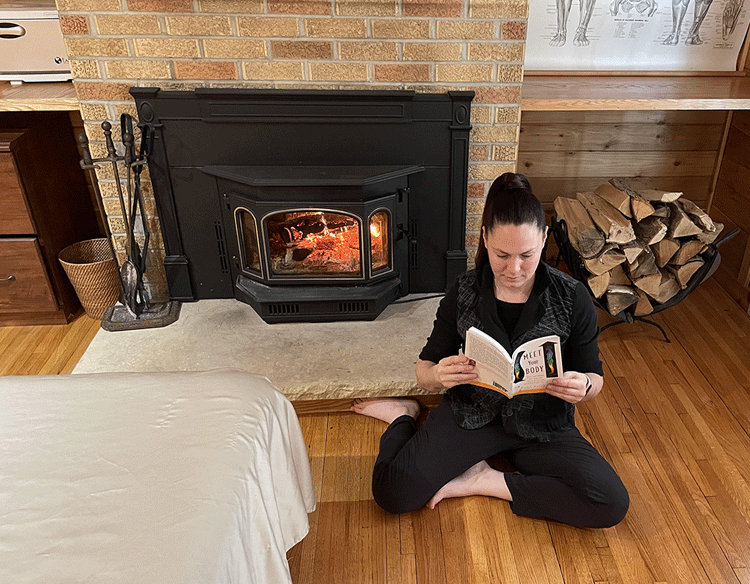With everyone ready to recover from 2020 I wanted to drop a line and encourage some light reading to enjoy by a cozy fire. A book that I recommend for clients as they go through the process of the ten series is called “Meet Your Body.” The author, Noah Karrasch, pulls from his teaching degree, Rolfing practice and massage background to share his extraordinary rehabilitation process as he heals through a broken spine suffered in a small plane crash.

I think his book allows readers to consider what may be new information or take a deeper dive into the mind/body connection. I think it is said well here:
This book offers people with both ordinary and extraordinary body challenges new ideas for how they can make changes in the way their bodies work for them. A practical guide to releasing bodymindcore trauma, Meet Your Body challenges us all to get in touch with and listen to our bodies to improve our health and overall happiness.
Notes on “Meet Your Body”
Bodymindcore trauma is a simplified definition explaining the connection between the mind, body, and trauma and how the body potentially holds memories in the fascia. I’m a believer and I’m biased.
It’s a controversial topic in therapeutic medicines. That said, I certainly pay attention and consider the body as an access point to feelings. Countless times I’ve worked with a client that has a memory of physical injury they had forgotten until they were on the table and touched there. Similarly, in my body it often seems a problem I didn’t know I had is gone when I get off the table.
Changing the structure changes the function (mechanical at the least) and that’s the release. Dr. Rolf used the comparison of “turning cotton into silk.” How’d it get there? Why do I now remember that’s where I landed on a rock 20+ yrs ago? Science offers theories about the nervous system’s role in initiating the release of chemicals during trauma that get stored and solidify in the soft tissue. Thus, the body/mind trauma connection.
This is my favorite passage from “Meet Your Body” because it’s a subtle practice that offers support during a time that can be destabilizing through explaining thoughts, feelings, sensations and directing those into movement forms.
Allow yourself to observe the feelings of movement or stagnation and exaggerate both settling into and springing from the feet, legs and knees when you walk. Notice if you shorten and tighten your back, land heavily into your heels or forget to spring off. Put more energy into lifting your body with your toes to massage your entire deep line of muscles. Realize that walking awareness is something you can practice anywhere and everywhere without it being too obvious that you’re working to reclaim your body.
Noah Karrasch
Consider checking out Noah Karrasch’s valuable insights in this book. Incorporating any of his exercises and stretches into your life can make a big difference in your wellness and wellbeing.